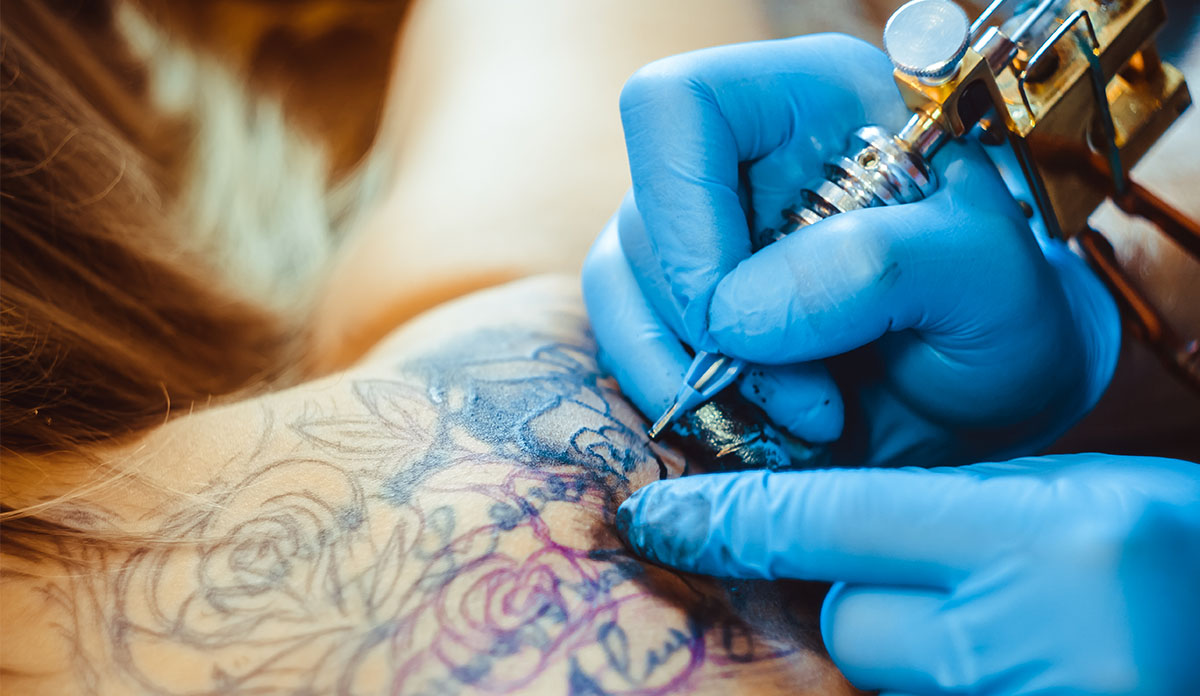Tattoos are an increasingly popular form of self-expression. Once taboo, they are now used by millions as a form of identity. Today, roughly three in ten Americans have a tattoo. They are especially popular among younger Americans, with those under 55 years old twice as likely as older adults to have any. (In fact, both authors have tattoos.)
While tattoos are quite safe, adverse events such as infections and allergic reactions do happen. There are safety regulations in place for the industry as well as professional groups dedicated to upholding them, but the regulations are rife with loopholes. Who is responsible for fixing those loopholes is also unclear.
The risk
If done improperly, tattooing can be dangerous. Contaminated ink or poor sanitation practices can lead to skin infections or even bloodborne illnesses such as HIV and Hepatitis B and C. Tattoos are open wounds and must be treated as such. When thorough sanitization and sterilization guidelines are followed, the likelihood of contracting any type of disease or infection from a tattoo is minimal. But if shortcuts are taken, there is still a risk. What’s more, scrupulous practices cannot protect completely from contaminated inks or allergic reactions.
The rules + loopholes
The tattoo industry is regulated through a patchwork of government standards and industry self-regulation. While quite successful, all things considered, this leaves ample room for bad actors to cut corners.
Basic safety and hygiene standards are set by the Occupational Safety and Health Administration (OSHA). Workers must use sterile equipment, properly dispose of sharps, and wear protective equipment such as gloves. Nonadherence can lead to steep financial penalties. These safety measures are enforced at the local level, so it’s up to the state to follow through.
Each state also has its own set of regulations. Many states require that tattoo artists be licensed, mandating safety trainings on bloodborne pathogens or safe tattooing practices. States can also set minimum age requirements, require parental consent for minors and mandate tattoo parlor permits from local health boards. But the specific requirements vary widely between states and enforcement may be unclear.
Individual artists or parlors often adopt their own standards and procedures, and the industry has a number of coalitions who put out guidelines. However, these self-guided regulations are not mandatory or enforceable by public health oversight. Plus, there is no requirement to report adverse events.
Another concerning reality is that tattoo ink is not regulated by the Food and Drug Administration (FDA) until after it’s on the market. This means that poisonous or contaminated inks can be used for a while before any side effects are recorded. For example, in 2019, the FDA found microorganisms in some major manufacturers’ inks, leading to a recall. Ink contamination during production has also led to recorded outbreaks of skin infections among tracked clients. Europe even plans to ban certain inks from the market because of their negative health impacts.
Given the loopholes, the question of who is responsible when things go wrong is still unanswered.
How do we fix this?
New regulations and laws to tighten tattoo safety guidelines have been routinely introduced at the state and national level but typically fail. This may stem from a lack of data to support needed changes.
Currently the FDA relies on voluntary reporting of adverse events, likely leading to substantial underreporting. The creation of a more robust national reporting system could go a long way to justify needed policy changes by letting researchers and policymakers study trends and link specific inks or practices to quality and safety issues.
Stakeholder engagement is also key. The majority of tattoo artists are dedicated to the safety and success of their art. New regulations would be more likely to succeed with support from respected members of the industry. Even buy-in from the tattooed public would be critical. After all, in the end, these regulations will affect their bodies.
New regulations would be more likely to succeed with support from respected members of the industry.
There is room for improvement in how the tattoo industry is regulated. While adverse events are not common, there is still risk. With a growing demand for tattoos, minimizing the health and safety risks through policy will put the focus back on the art itself.
Photo via Getty Images















